One of the most burdensome tasks property owners must face is that of mowing the lawn. While the small section of grass out front of an apartment isn’t that big a deal, mowing an entire acre or more becomes much more daunting. Luckily, we’ve come a long way from the days of non-powered push mowers. Now, we have lawn tractors, garden tractors, ZTR (zero-turn-radius) mowers, and automatic mowers. These beasts make short work of what could otherwise be a time-consuming and frustrating process. But with so many to choose from, how are you supposed to pick the best riding lawn mowers?
Up first, we review some of the top riding lawn mowers available today so you can find the perfect fit for you. Then, this guide will walk you through the different types of riding lawn mowers. Additionally, we review common trailer attachments (there’s seriously an attachment for just about any task) as well as the things to look for before buying this type of power equipment.
Top Picks
If you’re in a hurry, here’s an overview of our top picks:
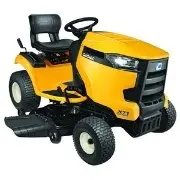 | Best Overall: Cub Cadet XTl. Cub Cadet is one of the biggest names in tractors. Their powerful XT1, with its enhanced steering system, smooth hydrostatic transmission, and an incredible price, is no exception! |
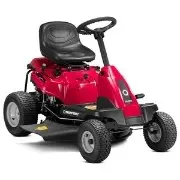 | Best Budget: Troy-Bilt 382cc. If you’re looking for a riding mower on a budget, check out this elite manual transmission mower. |
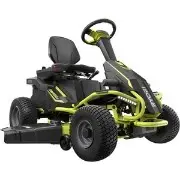 | Best Electric: Ryobi Electric. The electric mower movement takes the emissions out of mowing and lets you run on battery power rather than gas. |
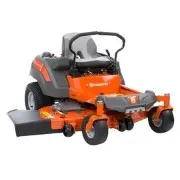 | Best ZTR: Husqvarna Z254. This incredibly agile zero-turn-radius mower is ready to maneuver around obstacles and slip into tight corners with ease. |
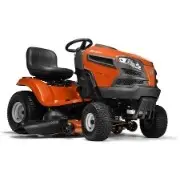 | Best Heavy-Duty: Husqvarna YTH18542. If you’ve got a larger yard with rougher grass or just want a workhorse that can handle whatever you have to throw at it, look no further! |
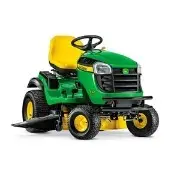 | Best Classic: John Deere E160. It’s yellow, it’s green, it’s versatile, and it’s powerful – must be the classic John Deere! |
Best Riding Lawn Mowers: A Closer Look
Here, we take a detailed look at our top picks shown above.
The Cub Cadet XT1 Enduro uses a powerful 22 HP Kohler 7000 Series twin cylinder-engine that offers 22 hp. The hydrostatic transmission means smooth acceleration without all the shifting, so you can focus more on where you’re going. Though it’s not a ZTR, the enhanced steering system has a mere 16-inch turning radius, so you can easily maneuver around the occasional obstacle. Choose from 12 different cutting heights to suit your preferred grass level, and enjoy a massive 46-inch cutting deck that cuts down on both your grass and your mowing time. The XT1 is compatible with a range of attachments and implements and is a tank ready to handle up to 2 acres of land in a single go. Enjoy the desirable capabilities of a garden tractor without the size and price!
Reviewers Like
- Push-button cruise control for relaxed mowing
- Great maneuverability over even land and inclines alike
- High-back seat design with oversized seat and elevated back support for enhanced comfort
Reviewers Dislike
- The removable cutting deck can be difficult to detach and reattach
- A few reviewers noted the engine stalling when the tractor is running but not moving, and the parking brake is not engaged
The Troy-Bilt OHV Lawn Tractor features a 382cc single-cylinder OHV Troy-Bilt engine with auto-choke. It is the quintessential neighborhood riding lawn mower. Thanks to the 6-speed on-the-go transmission, you can take the hassle out of manual shifting. The modest 30-inch cutting deck easily switches between clippings discharge to mulching to avoid buildup and return nutrients to your soil. This rear engine riding lawn mower has a 18-inch turn radius, so you’ll enjoy better line-of-sight and easier maneuverability. Easily traverse both flat and hilly yards up to 2 acres, making it a subtle pick for the best riding lawn mowers for hills.
Reviewers Like
- Compact size fits easily into sheds and garages
- Rear hitch for compatibility with a variety of attachments
- Soft-touch steering wheel with reduced vibration for more comfortable control
Reviewers Dislike
- A few reviewers disliked the design of the oil chamber and found changing the oil difficult and messy
- The wheel may jerk when crossing over bumps or embankments, meaning you may temporarily lose control of the tractor
3. Ryobi Electric Zero Emissions Riding Lawn Mower
The best electric riding lawn mowers
Ryobi’s battery-powered riding lawn mower, though a bit pricey, uses an innovative tri-motor design that can run for up to 2.5 hours on a single charge (or cover about 2.5 acres of land). Since it’s fully electric, you can rest easy knowing your mowing habits are contributing zero emissions into the atmosphere, making this our eco-friendly pick, as well! This low-maintenance design means no fumes, belts, spark plugs, or filters to worry about. As a bonus, the battery-powered mower makes virtually no noise when compared to a standard gas mower. You can set the dual-blade 38-inch cutting deck to 12 different positions for the perfect level cut on your lawn.
Reviewers Like
- 3 brushless motors for superior torque and power
- Easily recharge the battery with a standard 120-volt outlet
- User-friendly on-board control panel operates headlights, monitors battery level, manages cruise control, and can even charge your phone
Reviewers Dislike
- On the pricier end of non-commercial-grade riding mowers
- The pedals are very sensitive, which makes starting and stopping a little jerky until you get the hang of it
With a 23 HP Kawasaki engine, a huge 54-inch cutting deck, and zero-turn-radius control, the Husqvarna X254 is worth every pretty penny. The hydrostatic transmission is maintenance-and-worry-free and ready to tackle larger yards (up to 3 acres) and any obstacles it encounters. Husqvarna’s patent-pending park brake system adds an additional layer of safety by automatically activating or deactivating when the steering levers move outwards or inwards. The ergonomic seat and control panel, along with the anti-slip footwell, ensure your ride is relaxed and comfortable. The deep cutting deck design can be set to 6 different heights and combines improved airflow and high-performance blades to reduce debris buildup and make bagging more efficient.
Reviewers Like
- Large deck means more grass cutting with fewer passes
- Zero-turn-radius operation offers incredible maneuverability
- Intuitive brake system activates and deactivates automatically
Reviewers Dislike
- The lap-bar operation is difficult to get the hang of
- Some reviewers appeared to have issues with their warranties
Husqvarna makes our list a second time with their YTH18542. The hydrostatic riding mower is foot-pedal operated, so you can keep both hands on the wheel as you speed up, slow down, and change direction. With a mere 16-inch turn radius, the mower easily navigates obstacles and into tight spaces and handles uneven terrain like a dream. The 42-inch cutting deck features reinforcement for added durability and adjustable between 1.5 and 4 inches high. As a bonus, you can easily adjust the mid-back seat without the need for tools. The ergonomic steering wheel and step-through design make operation and access a breeze. Plus, with choke-less ReadyStart technology, your mower will be up and running with the turn of a key or the push of a button, just like your car!
Reviewers Like
- ReadyStart technology for easy, choke-free startup
- Powerful 18.5 hp 540cc Briggs and Stratton Intek engine
- Heavy-duty chassis with cast-iron axles and 13-gauge steel cutting deck
Reviewers Dislike
- Some reviewers reported excessive vibration/shaking, especially when going up inclines
- A few reviewers noted that the scalping wheels on the left cannot be adjusted, as they come into contact with the mower deck
Last, but certainly not least, is the John Deere E160. This gas hydrostatic mower uses a 24 hp V-twin John Deere engine ready to handle whatever your yard has up its sleeve. The 48-inch cutting deck uses a deep deck design and three different blades to prevent buildup and can be set to multiple heights to suit your preference. Thanks to John Deere’s EZ Change 30-second oil change system, routine maintenance is fast and painless. With a simple knob, you can turn on the electric blade engagement. The oversized operator station features a deluxe, high-backed seat with lumbar support and 10 different positions for customized comfort.
Reviewers Like
- Easily tackle 2 to 4 acres of land, be it uneven terrain, hills, or flat yard
- 18-inch turn radius with rear-mowing capability for easy maneuverability
- Hydrostatic transmission means no gear shifting and more intuitive operation
Reviewers Dislike
- Some reviewers disliked that much of the exterior shell is plastic
- Though the land capacity is greater, the mower has a higher price tag that seems mainly to be for the John Deere name
What Is A Riding Lawn Mower?
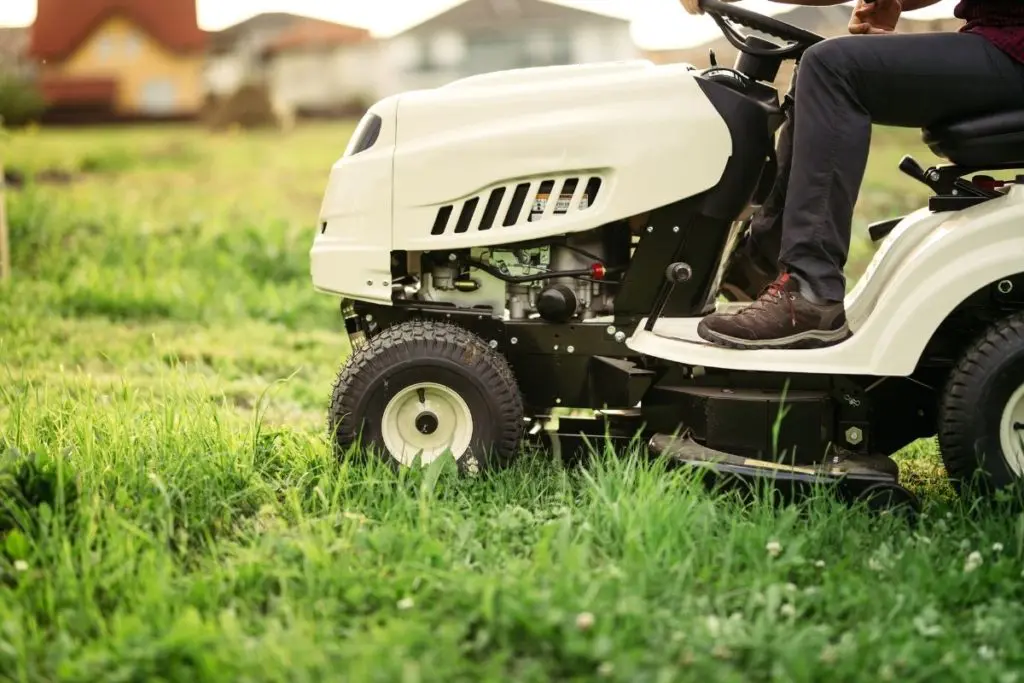
Riding lawn mowers, also known as garden tractors and lawn tractors, are the workhorses of the yard work realm. They typically look like miniature tractors and do all the mowing work themselves. All you have to do is sit on top and drive. The more property you maintain, the greater the benefit of a riding lawn mower. But even if you have a small property that’s all grass, a lawn tractor is an excellent tool for getting the job done quickly.
What Are the Different Types of Riding Lawn Mower?
If you’ve shopped for riding lawn mowers previously, you’ve probably seen prices ranging anywhere from just over $1,000 to upwards of $5,000. Why such a difference?
Prices range because there are three different types of riding lawn mowers: the lawn tractor, the Zero-Turn-Radius (ZTR) mower, and the garden tractor.
They sound similar, but each category has unique uses and nuances in the outdoor power business. Let’s dispel the confusion and get to the bottom of what’s what:
Lawn Tractors
When most folks think of a riding mower, they’re usually picturing a lawn tractor. If you live in suburbia, chances are one (or many) of your neighbors ride around on one of these guys regularly. Riding lawn tractors are great for lawn maintenance. They significantly reduce the time it takes to cut grass and do other basic yard tasks. Grass is pretty good at growing, so regular cutting is required to avoid the stink-eye of scrupulous HOAs.
Lawn tractors aren’t head and shoulders more expensive than your standard electric mower, and start around $1,000. They’re best-suited to properties of about 1/2 acre to 2 acres. Nobody wants to be out there on that much land with a push mower. That’s a recipe for a week-long battle of huffing and puffing, making these mean, green, grass-cutting machines worth their weight in gold. They are very easy to operate, and you’ve got to try pretty hard to do any real damage with them.
Most riding lawn mowers have a front-engine configuration, but there are those with rear engines. Both styles come in a wide range of cutting deck lengths. A larger cutting deck means a longer width, which reduces the number of laps you need to make around your lawn.
Some models in the lawn tractor category are compatible with attachments and implements like a light yard trailer or small garden wagon. But lawn tractors generally have light-duty frames and axles, so their primary purpose is still cutting grass.
Rear-engine riders are a sub-category of lawn tractor. They’re the smallest, with narrower cutting decks. Typically, they have lower top speeds, averaging about 4 to 5 miles per hour. You aren’t going to win any races at the drag strip at that speed, but it’s definitely enough to cut your grass. They might be the best pick for best riding lawn mowers for small yards. Rear-engine lawn tractors are much less expensive than regular lawn tractors. They are certainly less expensive than the other types of riding mowers.
Zero-Turn-Radius (ZTR) Mowers
Zero-Turn-Radius mowers feature front caster wheels that allow them to turn in place (hence “zero-turn-radius). They can pivot at sharper angles than lawn tractors and garden tractors. This means you can get into tighter spaces, mow a tight line around bushes, and avoid lawn ornaments with ease. Professional landscaping companies prefer these for their superior maneuverability and high forward speeds, making it one of the fastest lawn mower options.
ZTRs also have massive cutting decks for their smaller size, averaging around 60 inches. This means fewer turns around the yard for you, and higher efficiency for landscapers. These mowers are built with a rear-engine configuration.
The downside to ZTR mowers is they aren’t nearly as versatile as other riding mowers. They can’t handle the variety of tasks because they aren’t compatible with the same range of attachments. They just don’t have the right power for towing.
The other potential problem with the ZTR mower is the controls. Typically, ZTRs use levers and bars rather than the traditional steering wheel. As such, there’s definitely a bit of a learning curve. Don’t worry – you most likely aren’t going to do any serious damage while you figure things out, but be sure to take into account the time it will take you to get the hang of your mower.
ZTR mowers generally start at about $2800.
Garden Tractors
Basic riding lawn tractors are fine if you are cutting grass in suburbia, but you want real muscle for big jobs. Enter the garden tractor (also known as the compact utility tractor). These machines are the boss of the yard work business. They have powerful engines, are comfortable to drive, and can handle a plethora of tasks, especially when you get a model that is compatible with a bunch of attachments. The quintessential green John Deere riding tractor is an example of a garden tractor. Garden tractors have more horsepower than the other categories and are built on heavy-duty frames.
Better transmissions, heavy-duty frames, larger wheels, and sturdier axles make these a force to be reckoned with regarding all manner of yard duties. However, a key factor to recognize here is that garden tractors are, for all intents and purposes, real tractors. That means they have larger rear wheels and the capability of pulling trailers or implements. While you’re not going to be hauling a triple trailer down the highway with a garden tractor, you can absolutely tow light loads and special implements that can accomplish a range of jobs.
“Special implements” basically just means specialized attachments designed to accomplish different tasks. Your garden tractor will be compatible with all kinds of different tools, so you can do things like snow removal, grading, preparing soil, hauling firewood, and even renovating an entire lawn. That capability is great for professional landscapers and outdoor enthusiasts alike.
If you’re just looking at grass-cutting capacity, garden tractors can easily handle five or more acres of mowing. They’re the most expensive type of riding lawn mower, starting around $3000 and or more and ranging much higher. But if you’ve got the property and several ongoing yard or land projects, a garden tractor may be well worth the investment.
Summary of Options
Lawn tractors are good for smaller size properties of around 2 acres or less, and are generally compatible with smaller attachments.
Zero-turn-radius mowers are great grass cutters, but usually can’t be used with attachments. They have smaller wheels to increase their maneuverability, a rear-engine configuration, and wide cutting decks, making them better at navigating around obstacles.
Garden tractors can handle several acres or more. They have more rugged transmissions, greater horsepower, weigh more, do better on hilly terrain, and always have a hitch for a seemingly endless range of implements.
What to Know Before Buying a Riding Lawn Mower
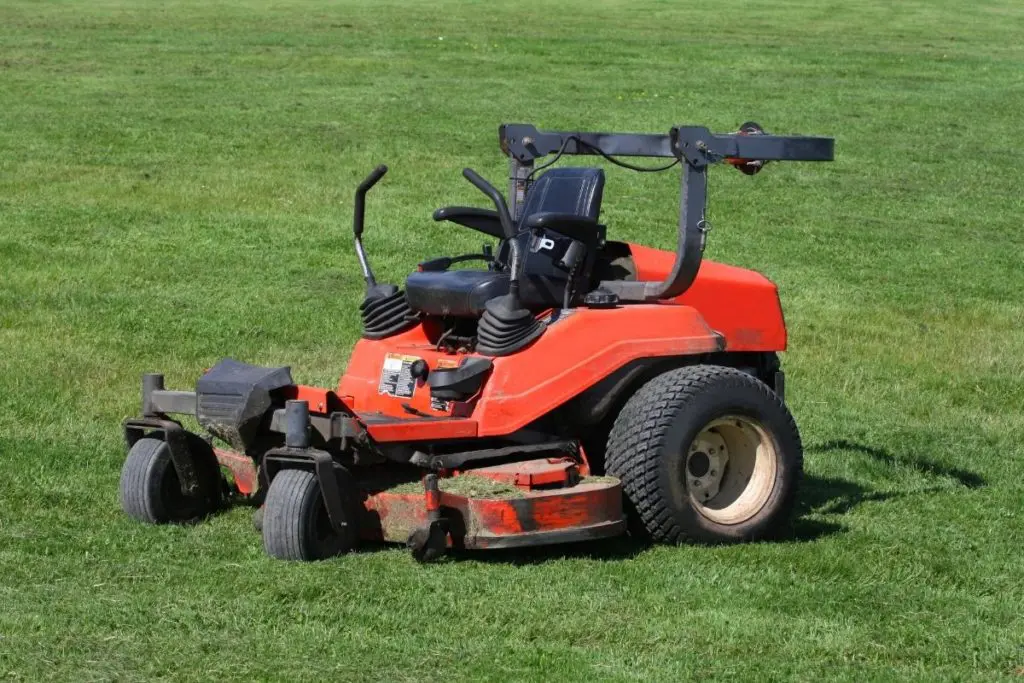
Unfortunately, there’s no real one-size-fits-all when it comes to these machines. The best riding lawn mower for you will depend on a lot of different factors:
Your Property
How much yard do you have to mow? If you’ve just got a little patch of green out in front of an apartment, then a riding lawn mower might be overkill. Smaller yards, especially those with lots of obstacles or weird nooks and crannies, will definitely be pleased to see a ZTR mower. If you’ve got around an acre, the lawn tractor is probably your best bet. Anything over 2 acres probably calls for a fully-fledged garden tractor.
Your Budget
The garden tractor may sound like the most appealing option, considering its wide range of capabilities. But the average price of these babies may make your wallet tremble. They’re a worthy investment, but they can be a hefty one. Take a look at your budget before you start your search, so you know what you have to work with.
Your Grass
This might not seem like something important to consider, but grass comes in many shapes and sizes. Knee-high grasses with thickets and brambles and other interspersed wild plants are almost sure to be too much for any standard lawn tractor to handle.
Your Needs
If you’re just looking for a lean, green, grass-cutting machine, then you can settle for a rear-engine lawn tractor, or a ZTR mower if you want the fancier maneuverability. But if you want something that can tow along a utility cart, for example, or handle fun attachments like lawn sweepers and aerators, then you’re going to need something more heavy-duty.
What to Look for In a Riding Lawn Mower
Here are some of the specifications to keep an eye on before taking the plunge and dropping cash on a riding lawn mower or garden tractor:
1
Cutting Deck Size
Deck size just refers to the length of the part of the tractor that actually cuts the grass. A longer deck will cut more grass at once time, which means fewer passes back and forth for you. Most cutting decks are around 38 inches or longer. Anything shorter than that should be reserved for smaller yards.
2
Uncut Circle Diameter
It sounds complicated, but the uncut circle diameter of any tractor just refers to the amount of grass that doesn’t get cut if you crank the wheel of your lawn mower all the way to one side and go in a circle. Basically, if you do a donut (the tightest possible donut) in your mower, how much grass is left uncut? The reason this is important is that it tells you how quickly your mower can change direction. ZTR mowers will, of course, be the best at this, while larger mowers will have much larger uncut circle diameters.
3
Horsepower
Horsepower isn’t just for your 4-wheel drive anymore! Anything with an engine is going to have some level of horsepower. Lawn tractors don’t need anything crazy, and average around 12 – 20 hp. Garden tractors, on the other hand, usually have a minimum of 15 hp, and average closer to 20 – 25 hp.
4
Fuel Tank Size
Just like your car, the size of your fuel tank will determine how long your mower can go before you have to get more gas. Riding lawn mowers don’t come with massive tanks as cars do and usually hover between 3 and 5 gallons.
5
Reverse Mow
Reverse mow is just what it sounds like: a feature that allows you to mow backward. This can be super helpful if you miss a spot because rather than swinging back around, you can just back up a little. If you’re working with a trickier landscape, you should consider getting a mower with reverse mow capability.
6
Traction Control and Differential Lock
These are fancy names for features that simply help prevent the mower from slipping as you maneuver over slopes greater than 15 percent. If you’ve got a level yard, then you may not need this feature. But, if you’ve got any hills or slopes, you’ll need these safeties.
7
Weight
The weight of your riding lawn mower may not seem like a big deal. After all, you’ll be sitting on it, not carrying it or pushing it. Who cares how much it weighs? But don’t forget that all that weight is going to be pressing down on your ground. If you’ve got softer, less compacted dirt, a heavier mower is going to sink in and get stuck.
8
Warranty
Not every product is worth bothering with a warranty; but riding lawn mowers are. As such an expensive investment, a warranty offers reassurance that you’ll be getting your money’s worth. Additionally, it protects you against any defaults in the machine or unexpected failures.
9
Transmission Type
There are three main types of transmissions you’ll find in riding mowers:
- Manual Transmission: Just like a car with a manual transmission, this means you’ll have to do all the gear shifting yourself. If you’ve got a large, wide-open space where you can get up to speed and keep going, then you’ll probably be fine with a manual transmission. But, if you have lots of trees to navigate around or many twists and turns, a manual transmission will easily become a pain.
- Automatic Transmission: Automatic mowers do all the gear shifting for you, so all you have to worry about is pressing the gas (or break!). The benefit here is less frustration, faster mowing, and easier use. The drawback is, of course, that automatic transmissions are more expensive.
- Hydrostatic Transmission: Hydrostatic transmissions use fluids to shift power from the engine to the wheels rather than a belt. This results in a smoother ride and a longer transmission life. The superior performance does, of course, come at a cost. Hydrostatic transmission mowers are the most expensive. They also require more fuel and maintenance than other transmissions, which means they may cost more in the long run.
Top Tractor Attachments
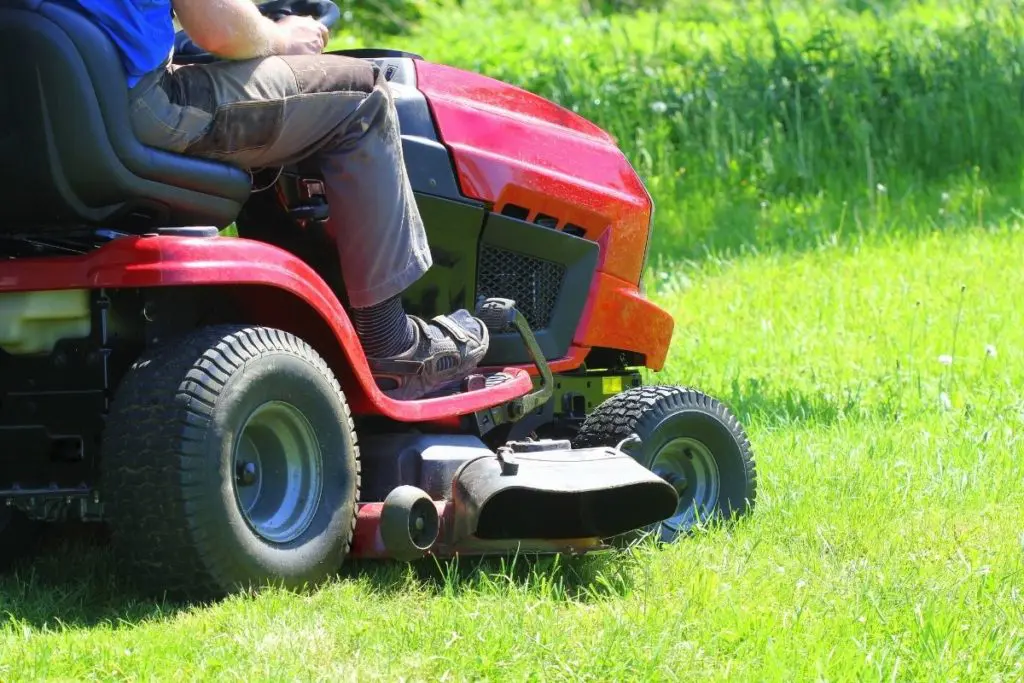
Once you own a lawn or garden tractor, a whole new world opens up to you. A very expensive world, unfortunately, but a new one nonetheless. Tractor attachments allow you to expand the capabilities of your grass cutter, making most property improvement and maintenance jobs faster, easier, and less stressful. Compatibility with so many different attachments is what sets garden tractors miles ahead of their smaller siblings.
These garden tractor implements are the most popular attachments used to get heavy-duty work done efficiently:
Twin Bagger
This is probably the most popular tractor attachment. Twin baggers suck up and contain grass clippings, leaves, and other debris that your riding mower mows down. On average, twin baggers have around 8 cubic feet of capacity (or more). A riding lawn mower with a bagger is essential if you have any deciduous trees on your property.
Utility Cart
One of the most useful attachments is the humble utility cart. If you’ve got a lot of land, this can be a lifesaver when hauling stuff (tools, plants, soil, etc.) out to your project work sites. We like to call it the “back-saver” attachment.
Lawn Sweeper
Tow behind lawn sweepers are the easy-button of leaf removal and cleanup. If you want a spic and span lawn free of debris and leaves, this is the attachment for you. Never rake again!
Aerator
A healthy root system leads to a healthy lawn. Many of these tow-behind aerators will dig out, plus about 3 inches deep from your lawn. This helps water, fertilizer, seed, and other nutrients reach the lawn’s root system and help it thrive. Your lawn will be looking like a manicured golf course in no time!
Spreader
The spreader (also known as the sprayer or the seeder broadcaster) is great for more than just spreading seeds. You can also use one for a quick round of fertilization. Basically, these attachments efficiently and automatically spread your seeds or fertilizer evenly behind you as you go. Their wider distribution area puts those little handheld units to shame. Plus, their random distribution patterns ensure no one spot gets over or under-fertilized.
Snowblower
If you live in colder climates prone to heavy snow, this seasonal attachment may just have you jumping for joy. Snowblower implements attach to the front of your tractor rather than the back and spits snow out of your way as you go. Elite snowblower units can remove up to 18 inches of snow with ease.
Further Reading
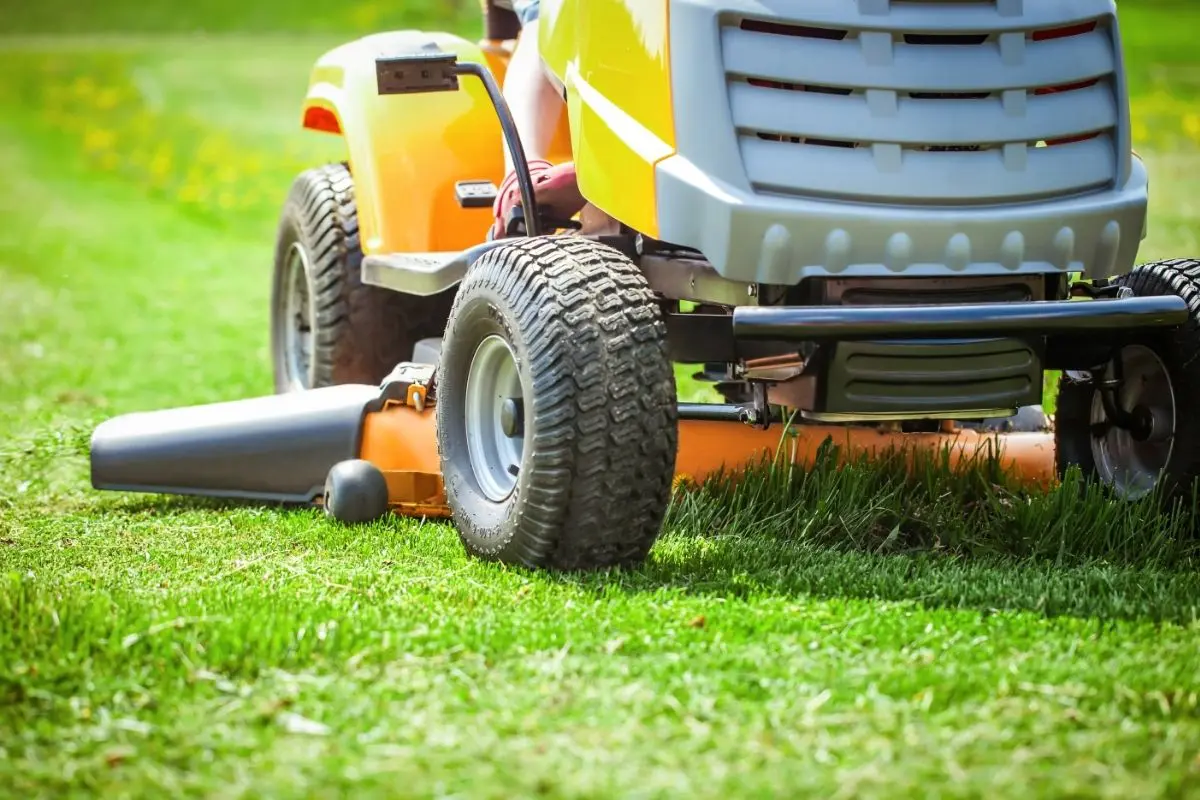
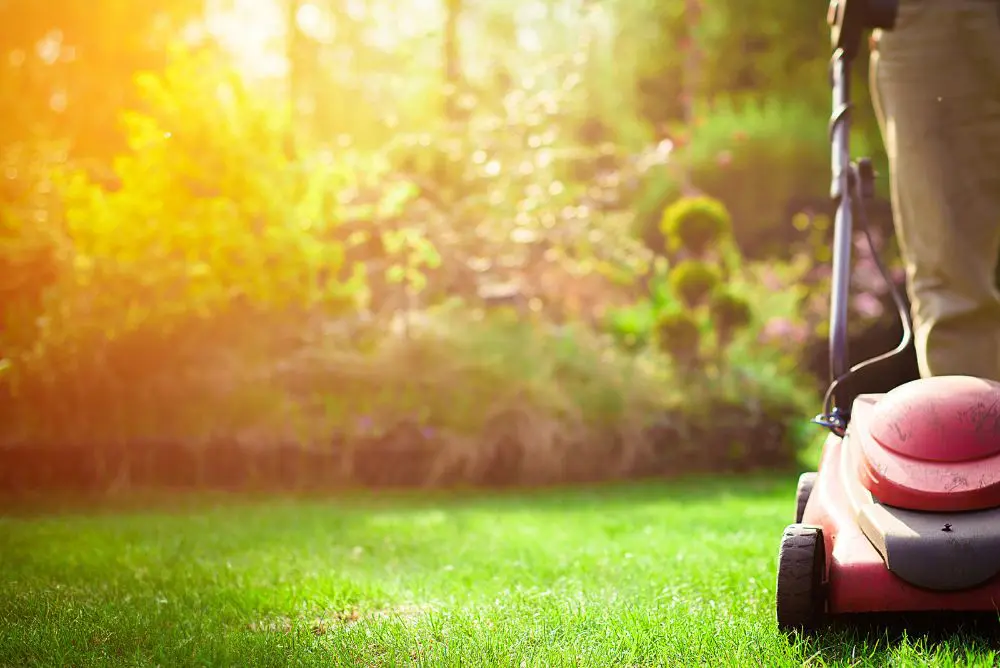
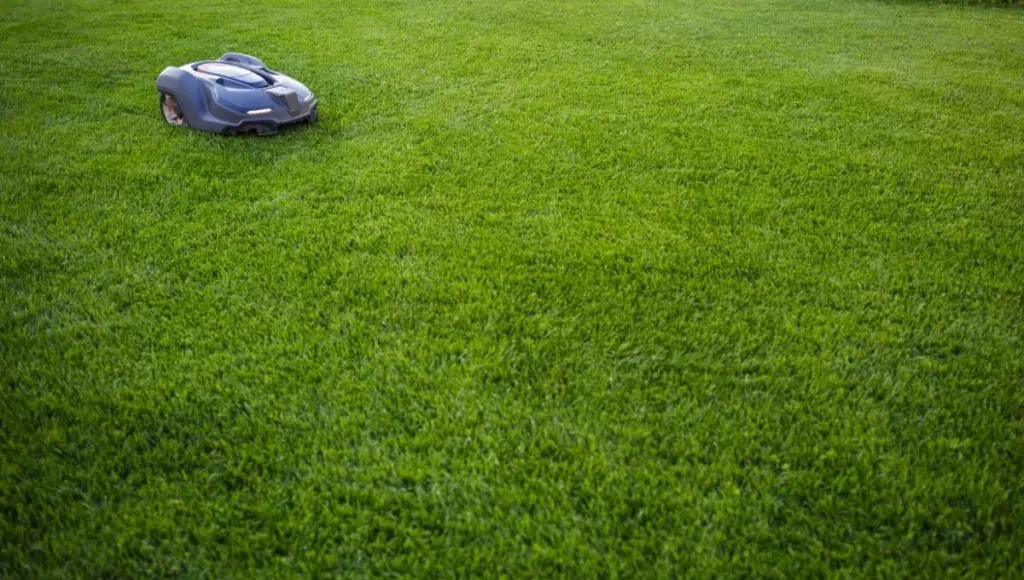
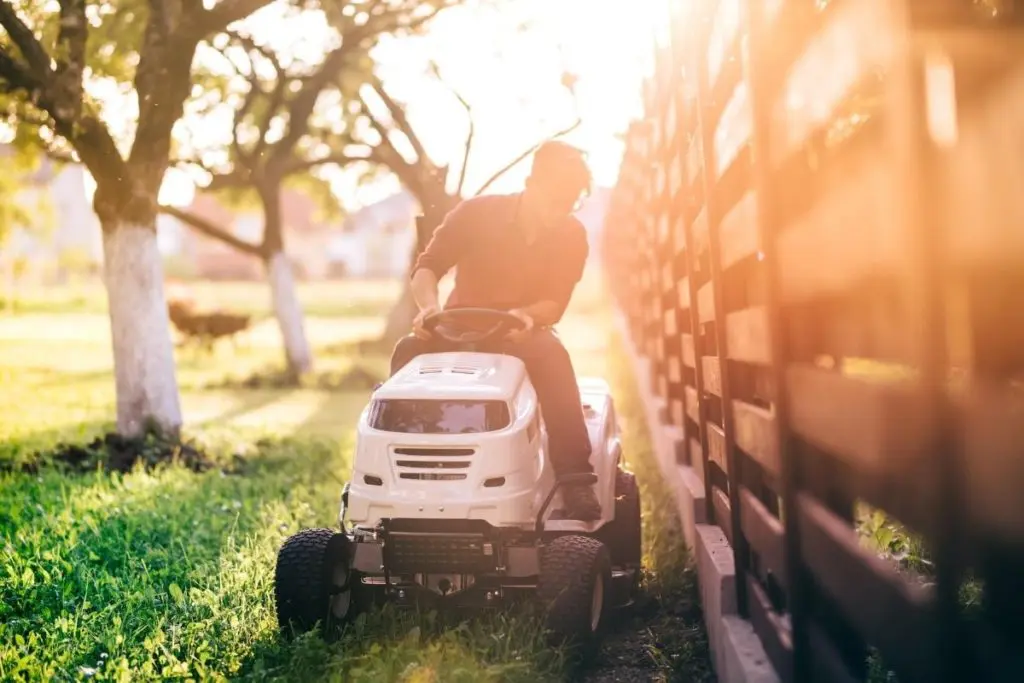
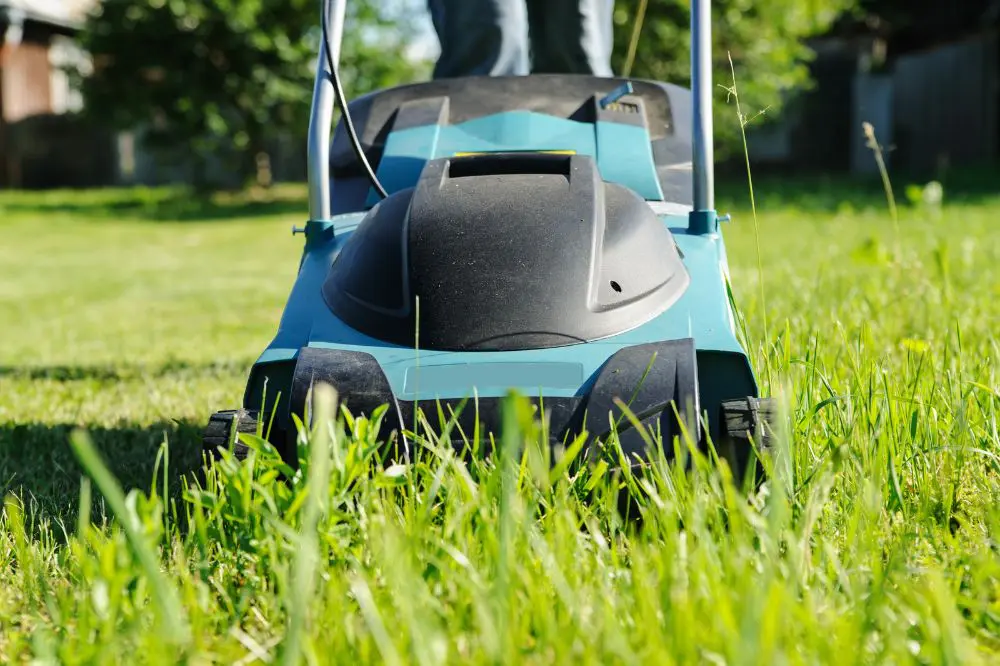
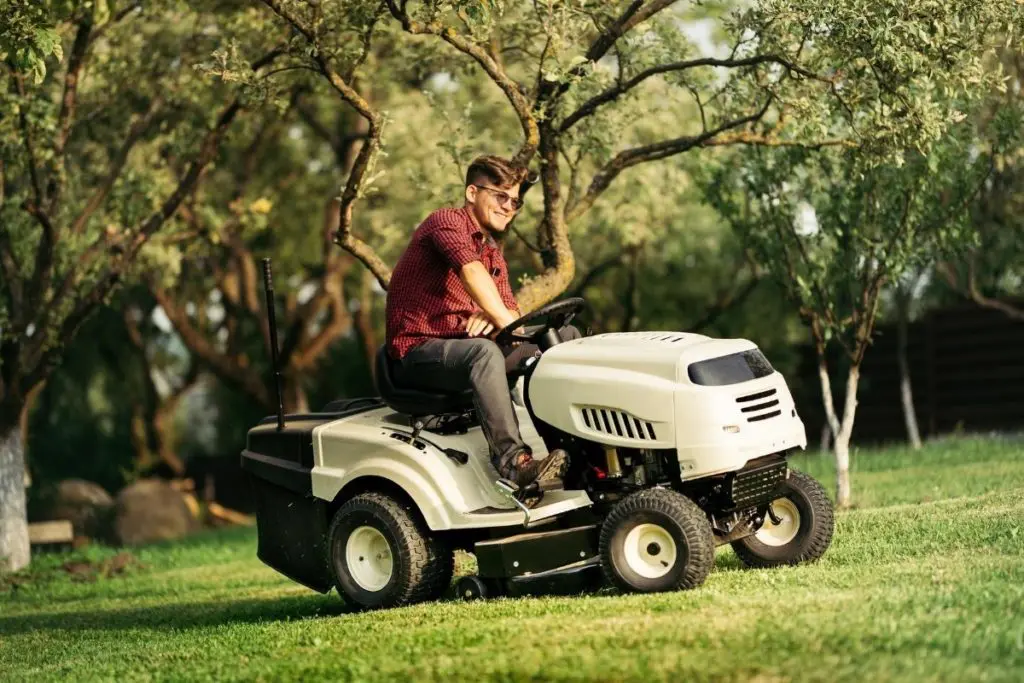
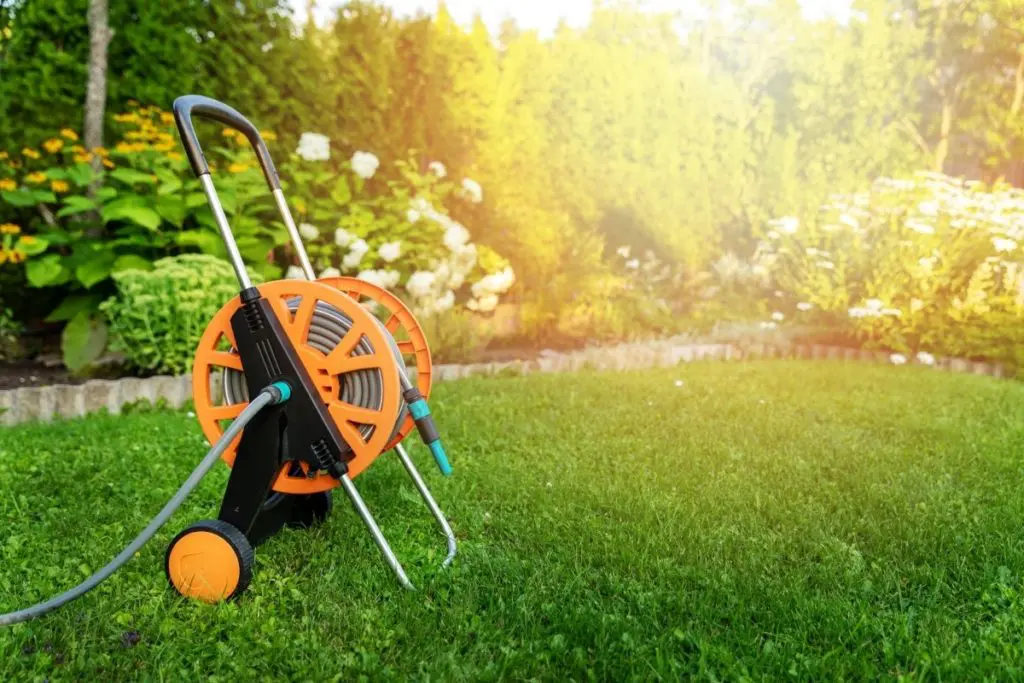
Janna
Sunday 18th of September 2022
Well, I just went to your recommendation to check out the Club Cadet riding mowers at Home Depot. Neither is available within 100 miles of my pr1mary area in zip code 98001. Neither of these are at any Home Depots within 100 miles.